"On teaching children about money management." National Archives.
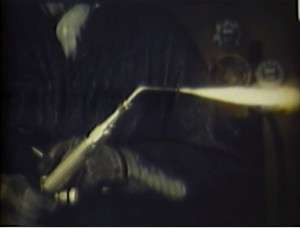
"Good teaching films are not easy to produce, and welding activities are not easy to film. In making this picture, Ray Garner and the Harmon Foundation have solved both problems in a highly satisfactory manner. The procedures are clearly and simply outlined in titles which are combined with unusually fine camera work, to produce a well integrated whole. Done almost entirely in closeups, the actual welding scenes show perfect exposure and, in many instances, very interesting angles. The film was made at Hampton Institute, in Virginia, and a student demonstrates the proper techniques in procedure. The title art work was especially good in this film, and the entire production showed the effects of a well organized plan and a careful procedure." Movie Makers, Dec. 1942, 509.
"A compilation film illustrating patterns in nature through examples found on the Pacific coast. Includes varied tidal marine life and plants -- crabs, starfish, lobster, anemones, clams, etc. Discussion of patterns in form and structure, behaviour and natural association." (BC Archives)
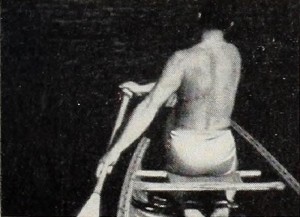
"To realize that paddling bow position in a canoe can be the sole subject of an entire film should surprise any reasonable movie maker. But when you consider that Paddle Up Front! is a physical-education teaching film, it is not so surprising. Naturally, the continuity treatment is repetitious, as all teaching-film plans are likely to be. But C. Roy Terry, jr., production director, ably demonstrates that the person who occupies the forward position in a canoe has an important job when it is done properly. The photography by Ellis A. Ring is workmanlike, particularly in cross lighted scenes which point up the muscle movements in various strokes by the paddler. The didactic narrative seems unnecessarily obvious in places, but it probably is justified when one considers the specific purpose of the film." Movie Makers, Dec. 1950, 468.
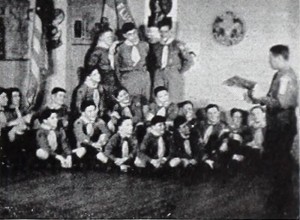
"With its first, full dress training film for Scoutmasters, the Visual Education Service of the Boy Scouts of America embarks, in The Patrol Method, on a new pedagogical path. Instead of presenting the perfect method for emulation, the movie records what happens when Scoutmasters and patrol leaders, with more enthusiasm than shrewdness, do things in ways that invite difficulty. The wiser course is pointed out tactfully, but indirectly, in the film. Here is an unusual employment of the movie medium, but the United States Army and Navy found that it worked in war training. The film is intended for use with a printed outline, and verbal conferences will follow its showings. Directly designed to accomplish a specific teaching task, The Patrol Method does it admirably." Movie Makers, Dec. 1945, 498.
"The Pelican colony at Stum Lake in the Chilcotin Region." (BC Archives)
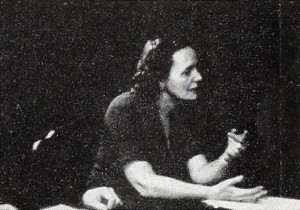
"If you are engaged in any phase of little theatre work, Prelude to Performance is certainly your picture. However, even if you are not engaged in any phase of little theatre work, Prelude to Performance is also your picture. That fact of universal appeal is the true measure of this movie's success. Made by John W. Jones with the cooperation of the London Little Theatre, in Ontario, Canada, the primary purpose of this picture was to outline (and, if possible, teach) the basic steps of putting a play together. This it most certainly does, from the inception of the idea down to the rise of the opening night curtain. But in the process — through a sound sense of cinematic treatment and smoothly integrated subtitles — the picture maintains a lively and appealing interest for all." Movie Makers, Dec. 1951, 412.
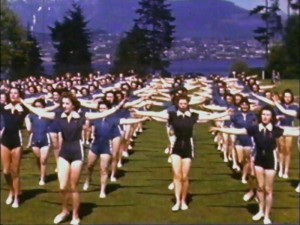
"Young women at Brockton Point, Stanley Park, put on a display of Pro-Rec activities: massed calisthenics, costumed dancing, drill team (brief shots only), more massed calisthenics. The film concludes with a couple of men's tumbling runs." (BC Archives)
One of the regular displays or demonstrations put on in Vancouver by the Provincial Recreation Program ("Pro-Rec"), a community-oriented physical education program administered by the British Columbia Department of Education. Mrs. Hilda Keatley was the Provincial Supervisor for Women. The program operated in many BC cities and towns during the years 1934-1953. (D.J. Duffy)
The filmmaker is not identified.
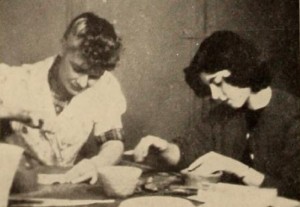
"A joint project of the members of the Motion Picture Photography Class of the Westchester Workshop, in White Plains, N. Y., Recreation Handmade is notable for its evenness of camera work. It presents in a naturally episodic fashion various handiwork classes available to children and adults of the community. If you like to work with your hands, this film will make you eager to enroll in one of the many activities offered — which, of course, is the purpose of its production. A rather full commentary describes how the courses work. Walter Bergmann, as instructor of the motion picture course, proves with his pupils' film that practical movie making can be taught — and taught well." Movie Makers, Dec. 1949, 470-471.
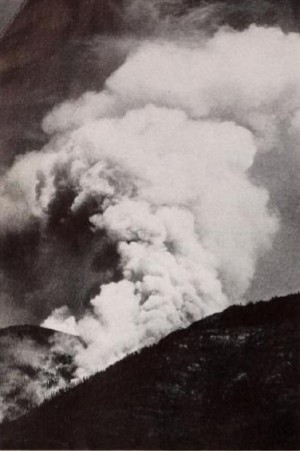
"To publicize fire prevention work of the U.S. Forest Service, R. P. Ewing, A.C.L., New York City, working in cooperation with K. D. Swan of the Service, Missoula, Mont., has, with the assistance of Frank Foltz, completed Red Hell of the Kaniksu, 400 feet, taken in the St. Joe, Kootenai and Kaniksu National Forests." Movie Makers, June 1932, 254.
Total Pages: 14